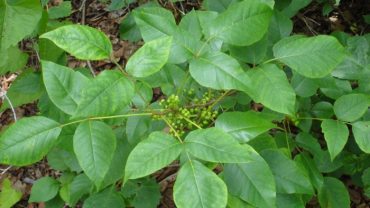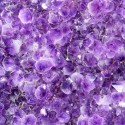Costochondritis Symptoms and Remedies
Costochondritis also called costovertebral joint pain syndrome (CVJPS), is a chronic disorder that causes persistent and severe shoulder pain in the front of your rib cage. It’s most often caused by an overuse injury or trauma to one or both shoulders. Although it can occur at any age, it typically affects men between 35 and 50 years old who are athletic or work as laborers. The symptoms include chest wall pain with movement such as coughing, sneezing, deep breathing, lifting heavy weights/bends, etc., localized tenderness on the back of ribs near vertebrae where two ribs come together just below the collar bone.
The best ways to relieve these symptoms are through stretching exercises for people with limited mobility due to their condition. Unfortunately, there is no cure for Costochondritis. Still, nonpharmacological treatments like physical therapy may help reduce inflammation and ease some of the body’s stress response from muscle spasms.
Inflammation of the cartilage that connects your ribs to your sternum is known as costochondritis (breastbone). The pain might be severe, stabbing, pressing, agonizing, similar to a heart attack. If you experience any heart attack symptoms, you should seek immediate medical attention. On the other hand, costochondritis is usually thought to be a harmless illness.
The disease might continue anywhere from a few days to a year for some individuals. However, most instances are resolved within a few weeks. While it lasts, you may want to attempt both conventional and alternative therapies to assist in alleviating symptoms.
What Is Costochondritis?
Inflammation of the cartilage that links the ribs to the breastbone causes costochondritis, a painful ailment. The costochondral joint is the name for this location.
Costosternal syndrome, also known as costochondrondynia, is a disorder that causes discomfort in the chest wall. Tietze syndrome is a disorder that occurs when there is edema (also known as chondropathia tuberosa or costochondral junction syndrome).
The left side of most persons is the most impacted. Because the symptoms sometimes resemble those of a heart attack, a correct diagnosis is critical. If you experience chest discomfort, contact your doctor or go to the nearest emergency room.
The illness is quite widespread, affecting around 200,000 individuals in the United States each year. Unfortunately, the etiology of costochondritis is usually unknown. Thankfully, the problem eventually goes away on its own. Costochondritis normally goes away in a few days to a few weeks, although some individuals might have symptoms for up to a year.
Although it is not a medically dangerous illness, costochondritis may cause many painful and often debilitating symptoms. In reality, apart from the symptoms it produces, it is considered safe when it occurs in isolation. However, you should always seek an expert medical examination for chest discomfort that seems to be costochondritis since its symptoms overlap with potentially life-threatening illnesses.
What are the links between costochondritis and other diseases?
Several disorders are similar to costochondritis or pain and may easily be mistaken for them. These are some of them:
Cancer is not caused by costochondritis. However, in certain situations, swelling induced by Tietze’s syndrome might be mistaken for cancer or vice versa. Existing tumors in the chest region may also irritate the rib cartilage, resulting in costochondritis discomfort.
Symptoms and Signs
Symptoms of costochondritis include:
- The left side of the sternum hurts.
- Chest discomfort that is either sharp or an unbearable feeling of heaviness in the chest.
- At least one rib is affected, but generally more.
- Increased discomfort while taking big breaths, coughing, lifting, or engaging in other demanding activities
- From the front of your chest, pain may move to your back or stomach.
- When you push on the afflicted ribs where they meet the breastbone, you will feel sensitivity or soreness.
- When you relax and breathe slowly, you will notice a reduction in discomfort.
Causes and Risk Factors
The causes of costochondritis are often unknown. However, there are a few recognized causes:
- The chest has been injured or traumatized.
- Tumors in the chest that develop on, inflame, or push on the cartilage that connects the ribs to the breastbone; tumors may be malignant or not.
- Heavy lifting, physical work, or strenuous activity
- Infections of the lungs, such as pneumonia or other disorders that produce a lot of coughing
- Tuberculosis, syphilis, and other viruses, bacteria, and fungus that may cause joint inflammation
- Infections caused by needles after surgery or intravenous (IV) therapy
- Arthritis
Costochondritis may be caused by several reasons, including:
- Working with your hands or carrying large objects
- Being a woman is a unique experience.
- Participating in activities with a high effect
- If you have allergies, you should be exposed to irritants regularly.
- Being above the age of 40
- Rheumatoid arthritis, ankylosing spondylitis, or reactive arthritis (Reiter’s disease) are all examples of rheumatoid arthritis.
Treatment
After verifying a costochondritis diagnosis, your doctor will discuss medical therapy options with you. These may include the following, depending on the intensity of your pain:
- Nonsteroidal anti-inflammatory medicines, either prescription-strength or over-the-counter (NSAIDs)
- Prescription pain medications, such as codeine-based drugs
- Antidepressants or anti-anxiety medications, especially if your pain keeps you up at night, since some of these medications may help you manage chronic pain.
- Anti-seizure medications are also used to manage chronic pain.
Numbing drugs or corticosteroids may be injected directly into the aching rib joints in severe instances or chronic costochondritis. This may help to alleviate pain and inflammation. In addition, physical therapy and rest may be recommended as part of a costochondritis treatment strategy.
5 Natural Treatments
It is possible to get relief from costochondritis. Symptoms usually go away in a few days to a few weeks for most individuals. Regardless of how long you have to deal with costochondritis symptoms, you may want to try some natural pain relief methods.
Natural and conventional costochondritis treatments may complement one another. Before beginning or modifying any therapy, exercise, or nutrition plan, including herbs and supplements, always visit a healthcare expert. NSAIDs, insulin, and other common medicines may all interact with natural therapies.
1. Stretches for costochondritis
Exercises for costochondritis might help you manage sternum discomfort. According to a clinical trial, targeted stretching exercises substantially reduced pain in 51 individuals with costochondritis compared to 34 matched control patients who did not stretch. Moreover, in terms of pain relief, the findings improved with time.
Several videos and websites show effective costochondritis stretches and physical treatment. The exercises are designed to extend the arms, thorax, back, and chest muscles.
Exercising for costochondritis:
- Slide down the wall. With your back to the wall, take a position. First, raise your arms to shoulder height, with your fingers pointing to the sky and your elbows approximately shoulder height. Next, raise your arms high while keeping your back against the wall. Lower to the starting position after holding. In each session, repeat 10 to 12 times.
- Squeeze the scapula. Stand tall and straight, extending your head toward the ceiling and taking deep breaths. Squeeze your shoulder blades together as tightly as you can for as long as it feels comfortable. Then release. Each session should be repeated five to ten times.
- Pecs should be stretched. Standing just outside a doorway, raise your arms as high as you can on both sides of the frame. Push your chest and torso straight forward, using your hands to support your weight. Keep your abs firm to prevent your back from wobbling or arching. Return to the starting position after a few seconds of holding. Each session should be repeated five to ten times.
- Stretch your thorax. Sit in a comfortable position with your legs straight out in front of you and your back straight. Lean forward gently with your hands on the floor at the sides of your thighs. Curl down over your legs, bringing your belly button closer to your spine. Hold for a few seconds before gently rising. Each session should be repeated five to ten times.
- Stretch on the side. Place your hands on your lower thighs in the same sitting posture as you did for the thoracic stretch. Lean forward with your right arm bent. Allow your hand to glide over to your left leg by bringing your right elbow down to the knee on that side. Hold your elbow on the inside of your right knee for added stretch, and move your chest to the left utilizing the pressure between them. Return to the starting position by slowly releasing the grip. Rep on the other side of the body. Stretch each side 10 to 12 times every session, alternating sides.
2. Make use of heat or ice
Heating pads or ice packs may help with costochondritis discomfort and inflammation. However, heat or ice should not be used for more than 15 minutes. To prevent skin harm, wrap the heat or cold source with a towel or washcloth.
3. Incorporate anti-inflammatory foods, herbs, or supplements into your diet
Anti-inflammatory medicines are often recommended since inflammation is at the foundation of costochondritis. However, if you prefer a more natural approach — or if your doctor says it’s okay for you to use certain herbs and supplements and your prescription or over-the-counter medications — you may choose to use diet and other natural therapies to combat inflammation.
- Consider adopting an anti-inflammatory diet. The foods listed below have been shown to have anti-inflammatory properties and may have other health advantages and combating inflammation. They’re also nutrient-dense.
- Concentrate on a diet that is high in a variety of fruits and vegetables. Berries, grapes, green leafy vegetables, tomatoes, pineapple, bok choy, cherries, avocadoes, broccoli, peppers, mushrooms, and beets are all excellent choices.
- Walnuts, fatty seafood (such as salmon or mackerel), and olive oil or coconut oil are all good sources of healthful fats.
- Include chia seeds and ground flaxseeds in your diet and cocoa or dark chocolate.
- Season dishes with bone broth, turmeric, and ginger to receive an added anti-inflammatory boost.
- Green tea should be consumed.
- Anti-inflammatory herbs and vitamins should be considered. Please keep in mind that several of these medicines interact with NSAIDs, steroids, diabetic meds, and other medications. Before making any changes to your vitamins, herbs, or supplements, always consult with your healthcare professional.
- Turmeric. Turmeric has a well-deserved reputation for combating inflammation, but it has also acquired popularity in the treatment of arthritis. It may assist in reducing pain and function over time while also preventing additional inflammation.
- Glucosamine. There’s some evidence that glucosamine may aid with inflammation, discomfort, and cartilage healing, particularly in disorders like osteoarthritis. Although there is no conclusive evidence connecting glucosamine to costochondritis, the advantages to cartilage and joint health may be enough to entice some individuals to supplement. In most circumstances, however, it should not be used with NSAIDs. According to studies, a daily dosage of 1500 mg is safe for most individuals.
- Herbs and substances that are anti-inflammatory or pain-relieving include:
- Arnica
- Bilberry
- Boswellia is a plant that grows in the Boswelli (Indian frankincense)
- Bromelain
- Chamomile
- The claw of the devil
- Fennel
- Ginger
- Ginseng
- Extract from grape seeds
- Nettle
- Silymarin is a kind of silymarine (silibinin or milk thistle seed extract)
4. Keep discomfort to a minimum
A variety of factors may cause costochondritis discomfort. Unfortunately, most individuals are unaware of what has led to their own situation. You may, however, take actions to address the environment that led to your illness if you do. In addition, even if you don’t know what’s causing your pain, you may make efforts to prevent it from becoming worse. Among the possibilities are:
- Infections such as pneumonia, persistent coughing, TB, respiratory infections, and post-operative infections should all be treated.
- Avoid allergies and irritants if at all possible.
- Rest and avoid vigorous exercise, hard lifting, or manual work.
- Avoid postures that aggravate the discomfort, such as deep breathing, embracing, sleeping on your stomach, singing, becoming out of breath, etc.
- Take a look at some natural cough cures, such as these:
- First, make sure you get lots of water.
- Bone broth or ginger tea are good choices.
- Take a tablespoon of honey and try it.
- Make use of a humidifier.
- Vitamin C should be taken (1000 mg three to four times per day or as otherwise advised by your doctor)
- Aromatherapy may be achieved by using a DIY vapor rub or essential oils.
- Try some natural pain relievers like:
- Foods with a lot of heat (cayenne, wasabi) or creams with a lot of capsaicin
- Massage a few drops of lavender or peppermint essential oil into the hurting spots.
5. Experiment with transcutaneous electrical nerve stimulation (TENS)
Sternum discomfort might last for a long time. According to the Mayo Clinic and the National Health Service of the United Kingdom, TENS may be a helpful pain management treatment for certain patients suffering from costochondritis.
TENS treatment uses a tiny device to transmit a little electrical current to your brain to block or mask the pain signals your body sends. The signal is sent through adhesive patches near the sore spot on your skin. It helps with pain and relaxes muscles for some individuals. TENS may also increase the creation of endorphins, which are your body’s natural painkillers.
Precautions
- Costochondritis pain should not be diagnosed or treated at home unless you have a verified diagnosis. If you have chest discomfort or other symptoms of costochondritis, see a doctor right once. Symptoms might readily be confused with those of a heart attack.
- Contact your doctor if your pain worsens, becomes more severe, or does not respond to therapy.
- Many natural remedies for costochondritis may interact with conventional medical therapy. Always consult a healthcare practitioner to determine the best combination of natural and medical therapy for you.
Last Thoughts
- Costochondritis is a chest pain-causing inflammatory disease. Although the symptoms may resemble those of a heart attack, genuine costochondritis is a rather benign illness.
- The source of costochondritis discomfort and inflammation is often unclear. However, infection, manual work or heavy lifting, vigorous physical exercise, a tumor, or a systemic condition may all cause it in certain situations.
- Costochondritis usually fades away in a few weeks, whether or not it is treated. Some patients, however, have symptoms for up to a year.
- NSAIDs and physical therapy are used to treat costochondritis medically. It may be necessary to use pain relievers, steroid injections, or other medications in certain circumstances.
- The goal of natural costochondritis treatments is to relieve pain and reduce inflammation. Costochondritis stretches, heat or cold application, anti-inflammatory diets, herbs, or supplements, pain management, and transcutaneous electrical nerve stimulation are all common suggestions (TENS).
Frequently Asked Questions
How can I get rid of costochondritis naturally?
A: If you have costochondritis, you should seek medical attention.
What vitamin is good for costochondritis?
A: Most commonly recommended vitamin for costochondritis is Vitamin D.
What foods help with costochondritis?
A: Many different types of foods can help with costochondritis, such as cucumbers.
FDA Compliance
The information on this website has not been evaluated by the Food & Drug Administration or any other medical body. We do not aim to diagnose, treat, cure or prevent any illness or disease. Information is shared for educational purposes only. You must consult your doctor before acting on any content on this website, especially if you are pregnant, nursing, taking medication, or have a medical condition.
HOW WOULD YOU RATE THIS ARTICLE?





